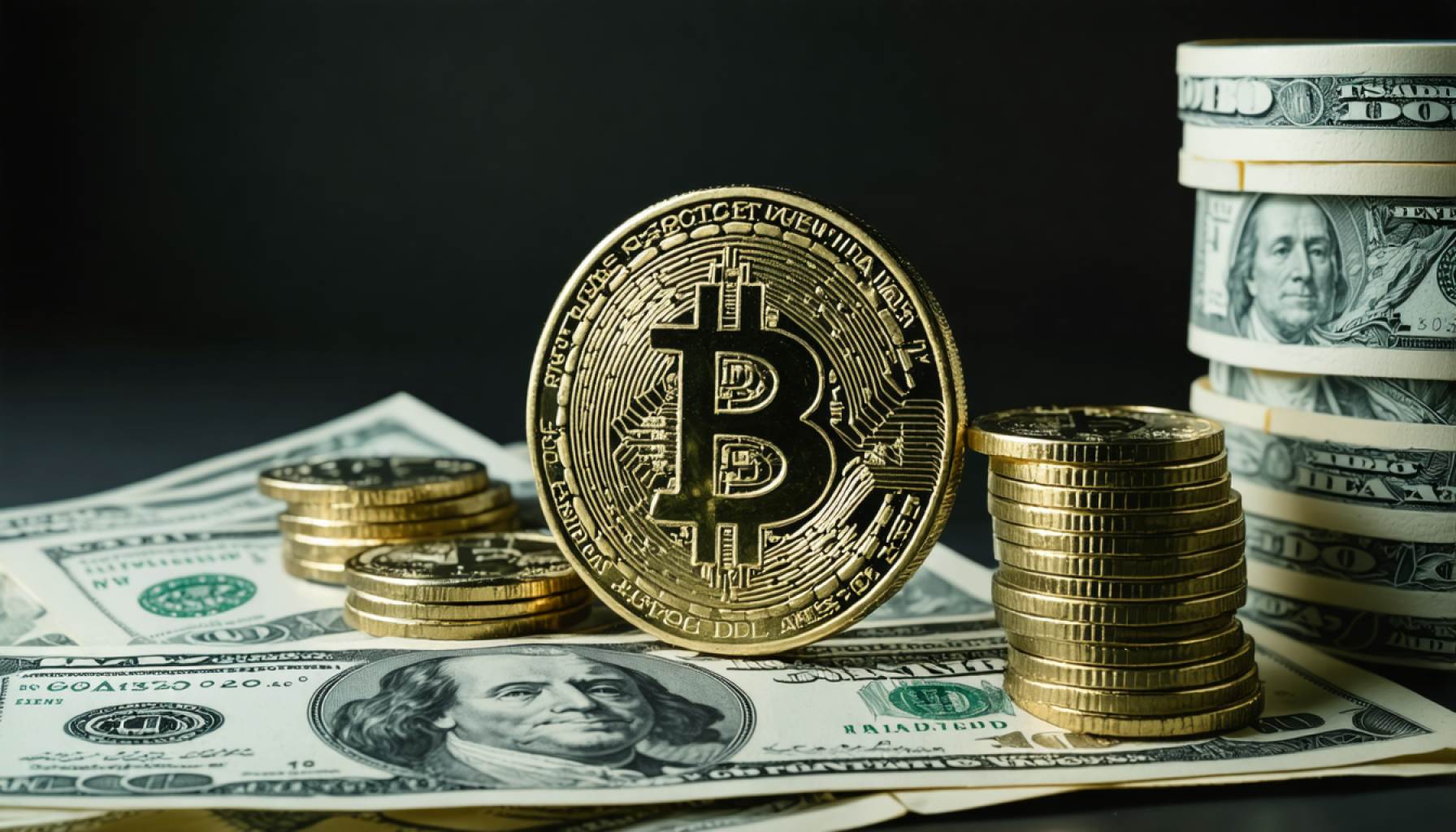- Bitcoin soared to its highest since April, surpassing $87,200, amid geopolitical and economic shifts.
- Reports suggest President Trump may replace Fed Chairman Powell, influencing market dynamics and causing currency volatility.
- The U.S. Dollar Index hit a three-year low at 98.5, driven by hedge fund sell-offs against major currencies like the euro and yen.
- Bitcoin’s rise contrasts with modest gains in other cryptocurrencies (Ethereum, Cardano) and traditional safe havens (gold at $3,382/ounce).
- Trump’s social media commentary and critique of Powell contribute to financial instability, challenging Federal Reserve independence.
- Amid potential disruptions at the Federal Reserve, Bitcoin symbolizes resilience and investor trust in decentralized assets.
A kaleidoscope of market dynamics sent Bitcoin soaring early Monday, dazzling the financial world with a climb past $87,200—its highest since early April. The cryptocurrency’s ascent appears to mirror the tumultuous whispers in Washington, as reports suggest President Trump is maneuvering to unseat Federal Reserve Chairman Jerome Powell.
Amidst these swirling political winds, the U.S. dollar finds itself reeling, with the Dollar Index plunging to a three-year abyss at 98.5—a retreat not seen since April 2022. This decline, fueled by hedge fund sell-offs against major currencies like the euro and yen, underscores the precarious global dance between currency values and geopolitical tensions.
Yet, Bitcoin’s recent movements tell a broader tale of resilience and transformation. As alternative cryptocurrencies like Ethereum’s ether and Cardano’s ADA trail behind with modest gains, Bitcoin gallops ahead, painting a vivid contrast against a backdrop of financial unpredictability. The juxtaposition is stark against traditional safe havens: gold, too, continues its golden era, with prices skyrocketing to an unprecedented $3,382 per ounce, marking a dazzling 28% uptick this year.
Market analysts suggest Trump’s blunt commentary on social media and his persistent critique of Powell have ricocheted through financial systems, causing ripples far beyond typical market fluctuations. Trump’s vocal push for lower interest rates adds another layer of complexity, weaving a narrative that challenges the very fabric of Fed independence.
The potential upheaval at the Federal Reserve echoes warnings about the erosion of its credibility. Chicago Fed President Austan Goolsbee cautions that any such move from Trump could unsettle the institution that’s been pivotal in steering economic stability. Meanwhile, murmurs of a forthcoming trade agreement with Japan add intrigue, yet it’s Trump’s perceived threat to Federal Reserve sovereignty that catches the spotlight, driving investors to recalibrate their strategies and hedge their bets in cryptocurrency and gold.
In this climate of financial uncertainty and political theater, Bitcoin emerges not just as a digital asset but as a symbol of resilience against the ebb and flow of currency dominance. Its rise is a testament to the confidence in decentralized assets during times of traditional market upheaval, reminding investors that even in chaos, there are opportunities to be seized and stories yet to be told.
Bitcoin’s Meteoric Rise: What It Reveals About Today’s Financial Climate
The Current Market Context
Bitcoin’s dramatic surge to over $87,200 underscores a pivotal moment in the financial landscape, driven by a confluence of economic policies, geopolitical tensions, and evolving investor sentiment. As Bitcoin reaches its highest level since early April, it reflects broader dynamics at play, especially in connection with U.S. political events that could reshape traditional financial institutions.
Key Facts and Insights
1. Decentralized Assets as Safe Havens: Bitcoin’s rally highlights the rising trust in decentralized assets during times of economic and political instability. Just as investors traditionally flocked to gold in uncertain times, cryptocurrencies are now seen as a hedge against market volatility and geopolitical strife.
2. The Dollar’s Decline: The U.S. Dollar Index’s decline to 98.5 suggests a significant shift in international perceptions of the U.S. economy under the current administration. This shift is partly attributed to speculative bets against the dollar in anticipation of political instability.
3. Gold’s Continued Upsurge: With gold prices hitting unprecedented highs of $3,382 per ounce, the precious metal remains a traditional safe haven. This run parallels Bitcoin’s ascent, indicating that investors are diversifying into both traditional and digital asset classes to mitigate risk.
4. Impact of Political Rhetoric: The influence of President Trump’s commentary on the Federal Reserve and interest rates illustrates how political discourse can impact financial markets. The potential removal of Fed Chairman Jerome Powell highlights concerns over the erosion of central bank independence.
How-To Steps & Life Hacks
– Diversification Strategies: Investors should diversify across both digital and traditional assets to hedge against economic uncertainty. Consider a balanced portfolio including cryptocurrencies and traditional safe havens like gold.
– Monitoring Political Developments: Stay informed about geopolitical events and their potential impact on financial markets. Platforms like Reuters and Bloomberg are excellent resources for real-time analysis and updates.
Real-World Use Cases
– Cryptocurrency in Embedded Payments: Businesses can leverage Bitcoin’s rising credibility by incorporating it as a payment option, enhancing international transactions and reducing reliance on unstable fiat currencies.
– Safe-Haven Investments: Both Bitcoin and gold can be incorporated into individual retirement accounts (IRAs) to protect retirement savings against inflation and currency devaluation.
Market Forecasts & Industry Trends
– Cryptocurrency Growth: The increasing institutional adoption of cryptocurrencies propels positive long-term market forecasts. Experts project market capitalization of digital assets to continue growing, driven by advances in blockchain technology and regulatory clarity.
– Interest Rates and Central Banking: The push for lower interest rates and the potential reshuffle in Fed leadership could herald an era of relaxed monetary policies, impacting markets globally.
Actionable Recommendations
– Short-Term Investments: For those seeking short-term gains, monitor Bitcoin and other cryptocurrencies closely. Utilize market indicators and expert analysis to time entry and exit points effectively.
– Long-Term Planning: Engage in long-term financial planning by keeping a portion of assets in proven hedges like gold and cryptocurrency. This strategy can ensure resilience against sudden market shifts.
Conclusion
In this volatile financial epoch, the surge in Bitcoin’s value serves as a beacon of resilience and adaptation. By diversifying portfolios, staying informed about market developments, and leveraging both digital and traditional investments, investors can navigate the complexities of today’s global economy with greater confidence. Embrace these shifts as opportunities to innovate and secure financial futures amidst uncertainty.







